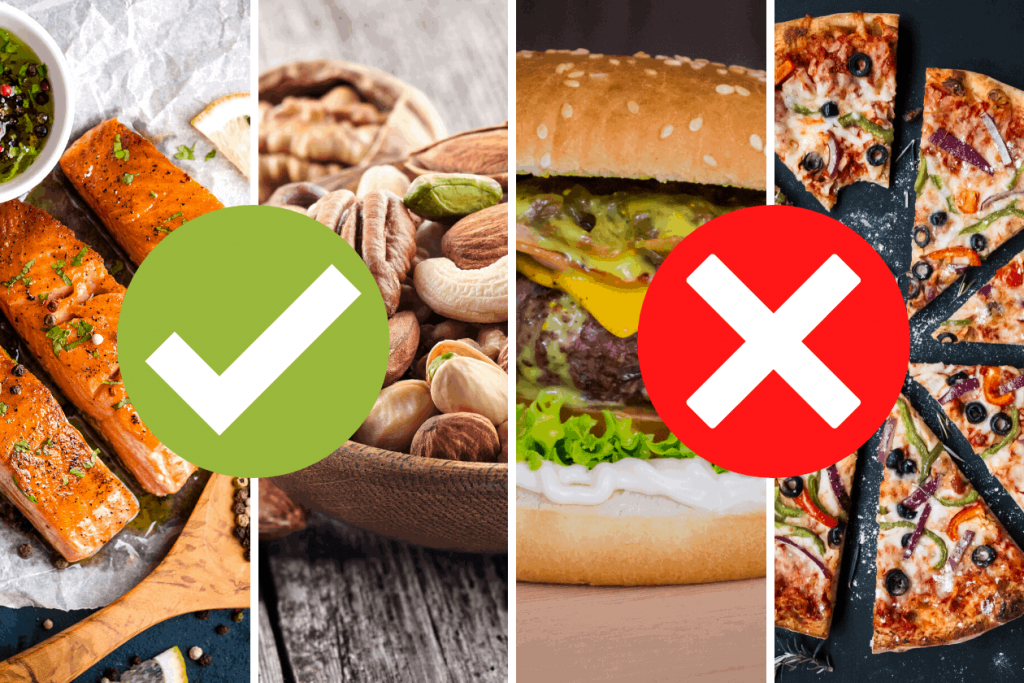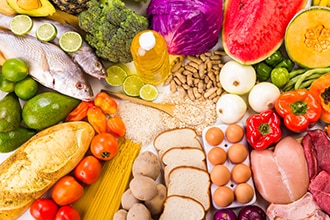
There are many options available for diabetics. However, it is important to choose healthy food based on individual needs and lifestyle. For controlling blood sugar levels, it is important to eat a balanced meal. Legumes are rich in protein, fiber and high-quality carbs. Soluble fiber can help curb hunger and stabilize blood sugar levels. Recent research found that eating legumes decreased type 2 diabetes risk and helped to control blood sugar levels.
As a low-carb food, avocados are a great choice for diabetics. Avocados contain healthy amounts of fiber as well as healthy fats. Walnuts have a high level of omega-3s making them a good choice for diabetics. You should only eat one serving of walnuts. Chickpeas can be eaten, which are high in fiber as well as protein. Chickpeas are high in protein and can be eaten as a snack. They also contain large amounts of dietary fiber.
While many people don't like spinach's taste, the beta-carotene in pumpkins can be converted to essential vitamin A. To get more fiber, you can mix them with other vegetables. They can be cooked and used as a part of a dish. For an extra protein boost, you can mix a scoop of quinoa with your favorite soup or smoothie.

Greek yogurt can be eaten as a snack for diabetics. Greek yogurt is safe for breakfast or snack as it only contains six to eight g of starchy vegetables. Pay attention to the label as some brands may have added sugar. The yogurt can be enjoyed with fruit, such as berries and cherries. Flax seeds have lignans that help to improve insulin sensitivity, and decrease the risk of heart disease.
Sweet potatoes are high in potassium and fiber, as well as lean protein. They can be cooked and eaten as a snack. Sweet potatoes are a good side dish for lean protein or vegetables, even though they are high in carbs. They are also high in magnesium which reduces your risk of getting diabetes and may prevent stroke. These foods are great for diabetics.
Numerous fruits and veggies are rich in antioxidants and a good source for fiber. They are great for smoothies and salads. Greek yogurt is another option. These can be added to any yogurt you prefer. You can even use them in smoothies. You can also use them when making salads.
Diabetic diets need to be balanced. Diabetic patients should eat foods that are low in sugar but not high in saturated fats or transfats. They should be rich not only in fat but also high in fiber, protein, fiber, and other nutrients. A diabetic diet should consist of whole grains and fruits. Healthy fats should also be part of the diet. You can get the benefits of these foods from these sources.

A healthy diet for diabetics includes plenty of fruits and vegetables. Fresh, organic, and ripe fruits and vegetables are the best. Low-calorie foods are the best for diabetics. There are many ways to incorporate fruits and vegetables into your daily routine. For instance, you could eat nuts every morning. These are delicious, healthy foods that diabetics can enjoy. Just remember to watch your sugar intake to prevent diabetes.
Other foods for diabetics include Greek yogurt. It's high in fiber but low in carbs. It can be enjoyed as a snack or as a savory dish. You can include many whole grains in your diet. They are low in calories and high in fiber. Whole-grain breads are a good choice for diabetics due to their low sugar content. These breads can also be used as a source of fiber, such as pastas and whole-grain breads.
FAQ
Improve immunity with herbs and supplements?
It is possible to boost immune function by using herbs and natural remedies. There are many natural remedies that can boost immunity, including echinacea (oregano), ginger, ginkgo biloba and vitamin C.
These herbal remedies are not meant to replace medical treatment. They may cause side effects such as nausea, diarrhea, stomach cramps, headaches, dizziness, and allergic reactions.
These are 5 ways you can live a healthy and happy life.
Living a healthy lifestyle involves eating right and exercising regularly. You should avoid processed foods, sugar, or unhealthy fats. Exercise is good for your body and muscles. You can improve your memory and concentration by getting enough sleep. Stress management can reduce anxiety and depression. And finally, having fun keeps us young and vibrant.
Exercise: Good and bad for immunity?
Your immune system is strengthened by exercise. Exercise boosts the production of white blood cells, which can fight off infections. You can also eliminate toxins from the body. Exercise can prevent diseases such as cancer and heart disease. It also reduces stress levels.
Exercising too frequently can make your immune system weaker. If you work out too hard, your muscles become sore. This causes inflammation and swelling. Your body then has to produce more antibodies to fight off infection. These extra antibodies can lead to allergies or autoimmune disorders.
So, don't overdo it!
Do I need calories to count?
You may be wondering "what is the best diet for you?" or "is counting calories necessary?" Well, the answer depends on several factors including your current health status, your personal goals, your preferences, and your overall lifestyle.
The Best Diet - Which One Is Right To You?
The best diet for me depends on my current health status, my personal goals, my preferences, and my overall lifestyle. There are many options, both good and bad. Some diets work well for some people and others do not. So what do I do? What can I do to make the right decision?
These are the questions that this article attempts to answer. This article begins with a brief overview of the various types of diets that are available today. Next, we'll discuss the pros and cons for each type of diet. Then, we will discuss which diet is the best.
Let's first take a look at different diets.
Diet Types
There are three main types, low fat, high protein, or ketogenic diets. Let's look at each one briefly.
Low Fat Diets
A low-fat diet restricts fat intake. This is accomplished by decreasing the intake of saturated fats such as butter and cream cheese. They are replaced by unsaturated fats such as avocados, olive oil, and cream cheese. For those looking to lose weight quickly, a low-fat diet is often recommended. However, this kind of diet may cause problems such as constipation, heartburn, and indigestion. A person may also experience vitamin deficiencies if they don't get enough vitamins.
High Protein Diets
High protein diets are known to restrict carbohydrate intake and promote the consumption of proteins. These diets typically have more protein than other diets. These diets are designed to build muscle mass and help you burn more calories. The downside is that they may not provide adequate nutrition for someone who needs to eat regularly. Also, they tend to be very restrictive, so they aren't suitable for everyone.
Ketogenic Diets
Ketogenic diets also go by the name keto diets. They are high on fat but low in carbs and proteins. They are commonly used by athletes and bodybuilders, as they allow them train harder and more frequently without getting tired. They do require strict compliance to avoid any side effects like fatigue, headaches, nausea, and headaches.
What's the problem in BMI?
BMI stands For Body Mass Index. This refers to the measurement of body fat using height and weight. Here is how to calculate BMI using the following formula.
Weight in kilograms divided by height in meters squared.
The result is expressed as a number from 0 to 25. A score of 18.5+ indicates that you are overweight. A score higher than 23 indicates that you are obese.
A person who is 100 kg in weight and 1.75m in height will have a 22 BMI.
What is the difference among a virus or a bacterium and what are their differences?
A virus is a microscopic organism which cannot reproduce outside of its host cell. A bacterium (or single-celled organism) reproduces by splitting itself into two. Viruses have a very small size (about 20 nanometers), while bacteria is larger (up to one micron).
Viruses are usually spread through contact with infected bodily fluids, including saliva, urine, semen, vaginal secretions, pus, and feces. Bacteria is usually spread directly from surfaces or objects contaminated with bacteria.
Viruses can get into our bodies through cuts and scrapes on the skin, bites, and other injuries. They can also penetrate the skin through the eyes, nose or mouth.
Bacteria can get into our bodies through cuts, scrapes and burns, insect bites, or other skin breaks. They may also come into our bodies through food, water, air, soil, dust, or animals.
Both bacteria and viruses can cause illness. However, viruses cannot reproduce within their hosts. They can only infect living cells and cause illness.
Bacteria can grow in their hosts and cause disease. They can invade other areas of the body. We need antibiotics to get rid of them.
Statistics
- WHO recommends reducing saturated fats to less than 10% of total energy intake; reducing trans-fats to less than 1% of total energy intake; and replacing both saturated fats and trans-fats to unsaturated fats. (who.int)
- According to the Physical Activity Guidelines for Americans, we should strive for at least 150 minutes of moderate intensity activity each week (54Trusted Source Smoking, harmful use of drugs, and alcohol abuse can all seriously negatively affect your health. (healthline.com)
- WHO recommends consuming less than 5% of total energy intake for additional health benefits. (who.int)
- According to the 2020 Dietary Guidelines for Americans, a balanced diet high in fruits and vegetables, lean protein, low-fat dairy and whole grains is needed for optimal energy. (mayoclinichealthsystem.org)
External Links
How To
27 Steps to a Healthy Lifestyle when Your Family Buys Junk Food
Cooking at home is the most popular way to eat healthier. This is difficult for people who don't know how to cook healthy meals. This article will give you some tips on how to make healthier choices when eating out.
-
Find restaurants that offer healthy options.
-
Before you order any meat dishes, make sure to order salads or vegetables.
-
Ask for sauces that aren't sweetened.
-
Avoid fried food.
-
Instead of ordering fried meats, request grilled meats.
-
Order dessert only if you absolutely need it.
-
You should always have something to eat after your dinner.
-
Slowly chew and eat.
-
When you eat, drink plenty of fluids.
-
Breakfast and lunch should not be skipped.
-
Fruits and vegetables are a great addition to every meal.
-
Choose milk over soda
-
Try to stay away from sugary drinks.
-
Limit the amount of salt in your diet.
-
Try to limit your frequent visits to fast-food restaurants.
-
If you can't resist temptation, ask someone to join you.
-
You should not allow your kids to watch too many TV programs.
-
Turn off the television during meals.
-
Do not consume energy drinks.
-
Regular breaks from work
-
Get up at a reasonable hour and do some exercise.
-
Get active every day.
-
Start small and increase your knowledge slowly.
-
Set realistic goals.
-
Be patient.
-
Find time to exercise even if you don't feel like it.
-
Positive thinking is important.